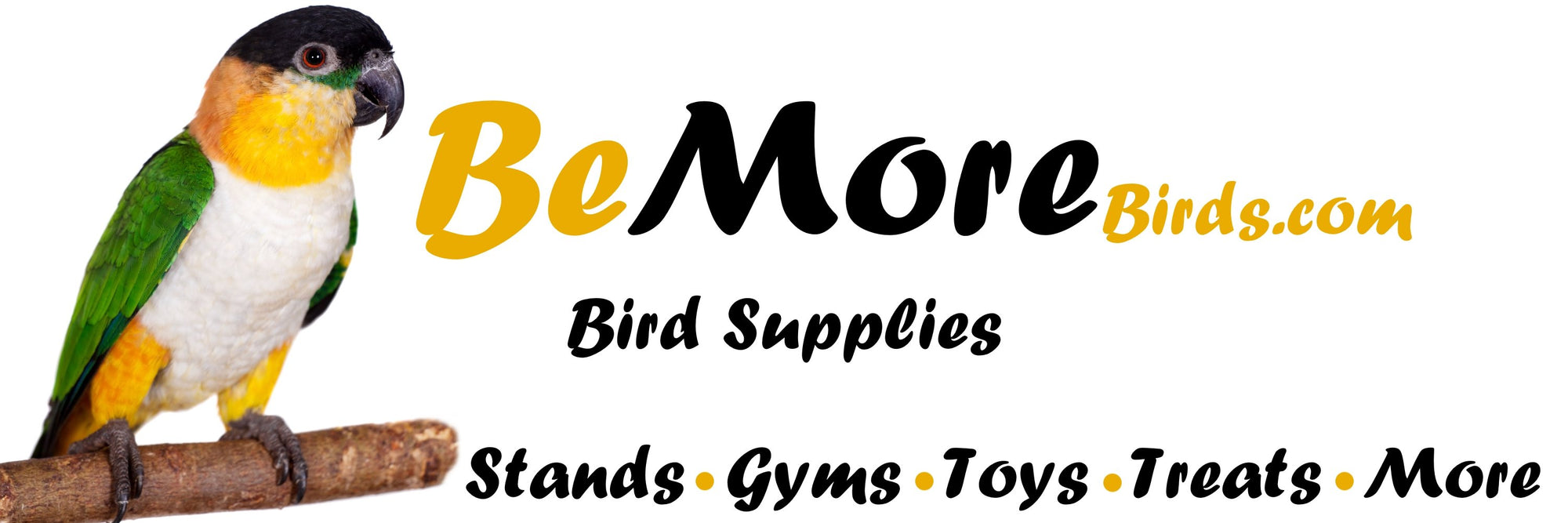For My Linnie Customers
I've put this page together as a resource for anyone who has bought a linnie from me, to make it easier for them to find the products, advice and research that they need.
Quick Care Sheet
I've put together a quick and to-the-point care sheet for new linnie owners. You can find it here: https://cdn.shopify.com/s/files/1/0117/6590/7513/files/bird_care_quick_sheet.pdf
Products
For food, go to: https://bemorebirds.com/collections/food
For toys, look at: https://bemorebirds.com/collections/extra-small-toys
If you're interested in stands, I can say from experience that pretty much any of these will work well: https://bemorebirds.com/collections/small-medium-birds
To help with those enormous linnie poops: https://bemorebirds.com/collections/cleaners-disinfectants
For a good first aid kit: https://bemorebirds.com/collections/accessories/products/bird-first-aid-kit
Green Linnie Ornament: https://bemorebirds.com/collections/accessories/products/green-linnie-ornament
In the future I will be offering even more products geared towards linnies, such as travel cages, cages, harnesses, and accessories.
When deciding on a cage, many things need to be taken into account:
- How much space do you have? Bigger is always better, but length and width are more important than height. You'll find that your bird will spend almost all of its time in the top part of the cage anyway.
- What is your budget? You can find a decent cage for $50, a good one for $150, or an amazing one for $1200. It all really comes down to how much you have to spend.
- How many hours per day is your linnie going to be in their cage? The more time they spend in their cage, the bigger it needs to be.
- Does your linnie have a play stand? If they don't have a separate place with toys, food and water where they feel secure, they'll need a bigger cage.
- How many birds are going to share the cage (either now or eventually)? You don't quite have to double the size for every new bird, but it should be big enough that they can all flap around comfortably.
- How easy is it to clean? This question is often the difference between a $150 cage and a $900 cage. Look at reviews to get a better idea.
- What material is it made of? In general, wire is the cheapest, powder coated wrought iron the next cheapest, and stainless steel the most expensive. This is for good reason. Powder coated cages last longer and are easier to clean than wire cages, while stainless steel should last a lifetime and be a breeze to clean.
- Is it brand name or generic? I feel pretty strongly that one should only buy name brand bird products (or from reliable sources like Etsy sellers). Generic versions of cages may look the same at first glance, but they will rust much faster. The paint probably has lead in it, too. Some trustworthy brands include Prevue, A&E, HQ, King's, Featherland, Natural Inspirations, and Centurion. I have good and bad things to say about almost all of these, but my favorites (factoring in cost) tend to be HQ and King's. Featherland is all stainless steel and thus expensive. Natural Inspirations and Centurion are a bit pricier but amazing small companies with the best customer service. Centurion is the place to go if you want an indoor or outdoor walk-in aviary.
- Used or new? You can certainly find used cages on Craigslist, Facebook Marketplace, etc. and there's nothing wrong with getting one provided that you clean and disinfect it thoroughly. Wash it with soap and let it dry, then spray it with Mango Pet Focus or a 1:10 bleach solution and let it air dry, preferably in the sun.
Links
The Lineolated Parakeet Society - Lots of great information, books and posters. Join to help support.
The Lineolated Parakeet Society Facebook Group - This group is open to everyone and features pictures, stories, questions and answers. A great place to ask for advice.

